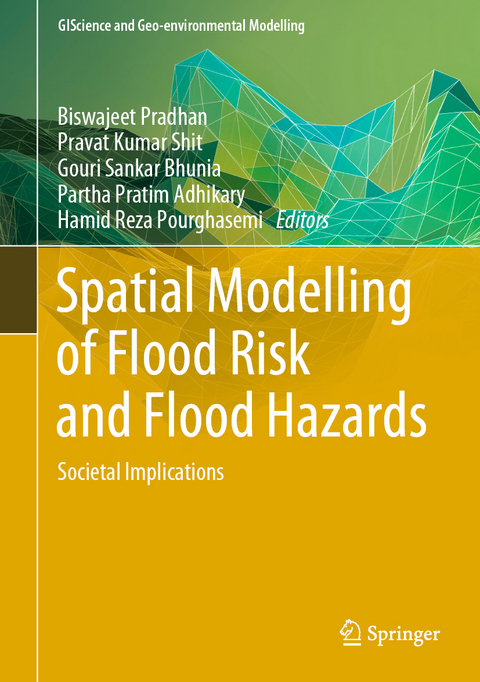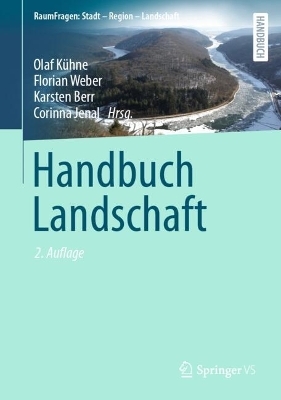
Spatial Modelling of Flood Risk and Flood Hazards
Springer International Publishing (Verlag)
978-3-030-94543-5 (ISBN)
Floods and flash floods with hydro-meteorological and tropical cyclones are the some of the most devastating natural disasters causing massive damages to natural and man-made features. Flood hazards are a major threat to human life, properties (agricultural area, yield production, building and homes) and infrastructures (bridges, roads, railways, urban infrastructures, etc). Flood hazards susceptibility mapping (risk assessment) and modelling is an essential step for early warning systems, emergency services, prevention and mitigation of future environmental and social hazards and implementation of risk management strategies. Due to the lack of proper information, technology-based policies and strategies, mapping and modelling can often not be implemented to the best possible level. Geo-spatial techniques have enjoyed rising interest in recent decades among the earth environmental and social sciences research communities for their powerful ability to solve and understand various complex problems and develop novel approaches toward sustainable earth and human society.
By linking geo-spatial computational intelligence techniques with societal and environmental-oriented problems, this book demonstrates geospatial technology approaches to data mining techniques, data analysis, modelling, risk assessment and visualization and management strategies in different aspects of flood hazards. We believe that a diverse group of academics, scientists, geographers, hydrologist, remote sensing and GIS expertise, environmentalists, meteorologists and computing experts with a common interest in geospatial sciences within the earth environmental sciences and humanistic and social sciences will find this book to be of great value.
lt;b>Prof. Dr. Biswajeet Pradhan is an internationally established scientist in the field of Geospatial Information Systems (GIS), remote sensing and image processing, complex modelling/geo-computing, machine learning and soft-computing applications, natural hazards and environmental modelling and remote sensing of Earth observation. He is the Director of the Centre for Advanced Modelling and Geospatial Information Systems (CAMGIS) at the Faculty of Engineering and IT. He is also the distinguished professor at the University of Technology, Sydney. He is listed as the World's most Highly Cited researcher by Clarivate Analytics Report in 2019, 2018, 2017 and 2016 as one of the world's most influential mind. In 2019 and 2018, he has been awarded as World Class Professor by the Ministry of Research, Technology and Higher Education, Indonesia. He is a recipient of Alexander von Humboldt Research Fellowship from Germany. In 2011, he received his habilitation in "Remote Sensing" from Dresden University of Technology, Germany. Since February 2015, he is serving as "Ambassador Scientist" for Alexander Humboldt Foundation, Germany. Professor Pradhan has received 55 awards since 2006 in recognition of his excellence in teaching, service and research. Out of his more than 450 articles, more than 400 have been published in science citation index (SCI/SCIE) technical journals. He has written eight books and thirteen book chapters. He is the Associate Editor and Editorial Member in more than 8 ISI journals. Professor Pradhan has widely travelled abroad visiting more than 52 countries to present his research findings.
Dr Pravat Kumar Shit is an Assistant Professor at the PG Department of Geography, Raja N. L. Khan Women's College (Autonomous), West Bengal, India. He received his M.Sc & Ph.D. degrees in Geography from Vidyasagar University and PG Diploma in Remote Sensing & GIS from Sambalpur University. His research interests include applied geomorphology, soil erosion, groundwater, forest resources, wetland ecosystem, environmental contaminants & pollution, and natural resources mapping & modelling. He has published 16 books (Springer-12, Elsevier-02, CRC Press-01 and other) and more than 70 papers in peer-reviewed journals. He is currently Series Editor for the GIScience and Geo-environmental Modelling (GGM) book series published by Springer Nature.
Dr Gouri Sankar Bhunia received Ph.D. from the University of Calcutta, India in 2015. His Ph.D. dissertation work focused on environmental control measures of infectious disease using Geospatial technology. His research interests include environmental modelling, risk assessment, natural resources mapping and modelling, data mining and information retrieval using Geospatial technology. Dr Bhunia is associate editor and on the editorial boards of three international journal in Health GIS and Geosciences. Dr. Bhunia has published more than 70 articles in various journals in Scopus indexed. He is currently Series Editor for the GIScience and Geo-environmental Modelling (GGM) book series published by Springer Nature.
Dr. Partha Pratim Adhikary is a renowned scientist in the field of GIScience and simulation modeling. He is presently at ICAR - Indian Institute of Water Management, Bhubaneswar, India. He has a brilliant career and experience of more than 15 years on research, teaching and training in the field of Spatial Variability, Soil and Water Conservation, Groundwater Pollution and Solute Transport Modelling. He has been bestowed with various scholarships, fellowships and awards by various scientific societies, universities and Government as recognition of his contribution to science and the society. He is the member of several national and state level professional scientific bodies. Dr Adhikary has more than 120 publications to his credit which include resea
Chapter 1. Introduction to Spatial Modeling of Flood Risk and Hazard: Societal Implication.- Chapter 2. Flood Susceptibility Mapping Using Morphometric Techniques and GIS.- Chapter 3. Palaeohydrologic Estimates of Flood Discharge of Lower Ramganga River Catchment of Ganga Basin, India Using Slackwater Deposits.- Chapter 4. Flood Risk Zone Identification Using Ground Based Observation and Geospatial Technology.- Chapter 5. Dynamics River Networks and Determination of the Flood Potential in Lower Brahmaputra Valley Using Geoinfromatics.- Chapter 6. Flood Vulnerability Assessment Using AHP and Frequency Ratio Techniques.- Chapter 7. Application of Hybrid Machine Learning Algorithms for Flood Susceptibility Modelling.- Chapter 8. Flash Flood Susceptibility Mapping Using GIS Based AHP Method.- Chapter 9. GIS Based Hydrological and Hydraulic Models to Forecast River Flood Risks and Proposition of Management Measures.- Chapter 10. Large Scale Human Intervention and Estimation of Flood Susceptibility Applying Frequency Ratio Model.- Chapter 11. Flood Induced Transport Infrastructural Losses in India: Regional Assessments.- Chapter 12. Rural-Urban Differential in Flood Vulnerability and Community Preparedness for Flood Management Strategies.- Chapter 13. Application of Geospatial Techniques for Urban Flood Management: A Review.
| Erscheinungsdatum | 08.04.2022 |
|---|---|
| Reihe/Serie | GIScience and Geo-environmental Modelling |
| Zusatzinfo | XIX, 238 p. 120 illus., 110 illus. in color. |
| Verlagsort | Cham |
| Sprache | englisch |
| Maße | 178 x 254 mm |
| Gewicht | 749 g |
| Themenwelt | Mathematik / Informatik ► Informatik |
| Naturwissenschaften ► Geowissenschaften ► Geografie / Kartografie | |
| Schlagworte | Flood risk • flood risk control • geospatial anaysis • hydrogeology • monitoring and modelling floods • Remote Sensing • sustainable development |
| ISBN-10 | 3-030-94543-X / 303094543X |
| ISBN-13 | 978-3-030-94543-5 / 9783030945435 |
| Zustand | Neuware |
| Haben Sie eine Frage zum Produkt? |
aus dem Bereich


